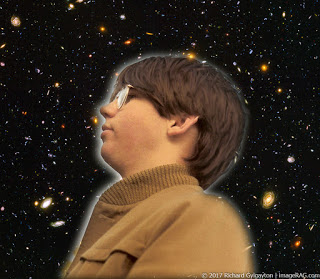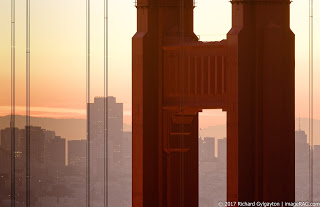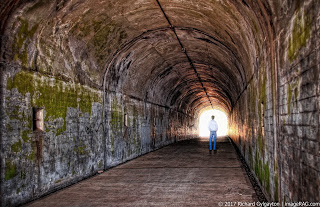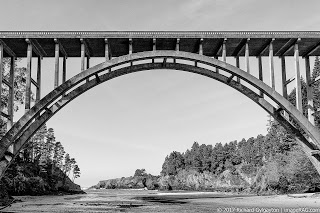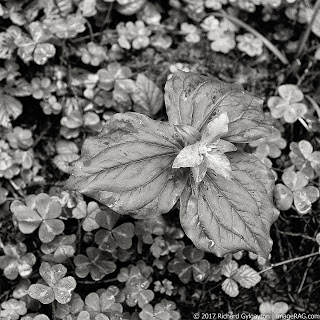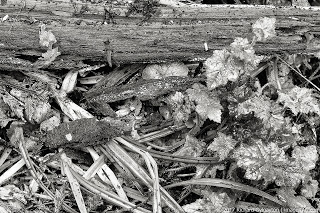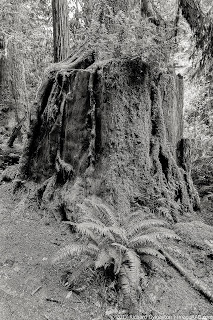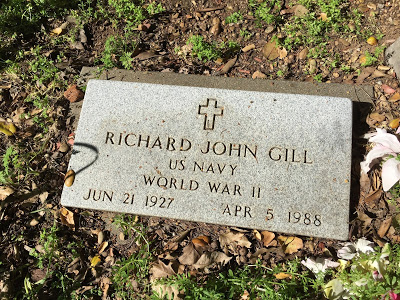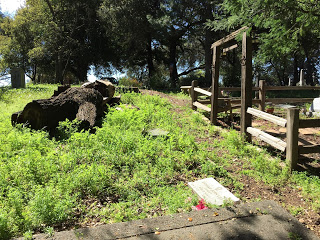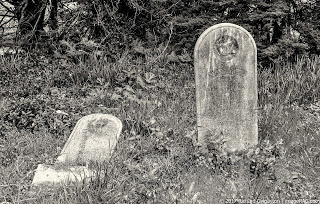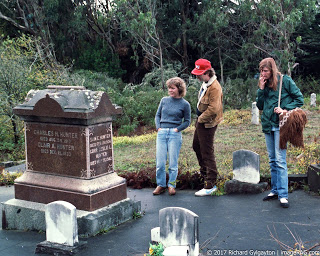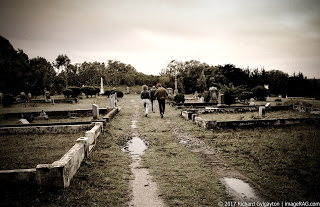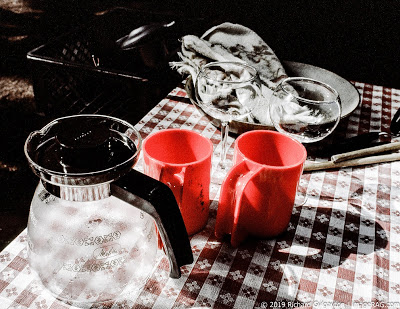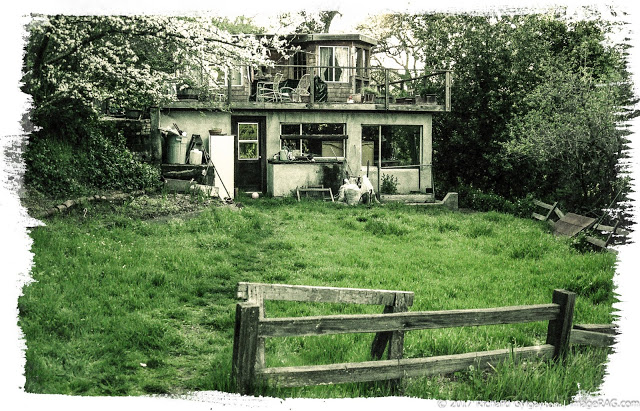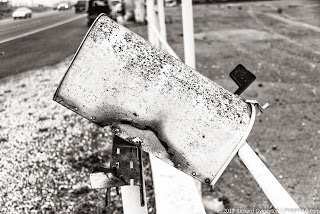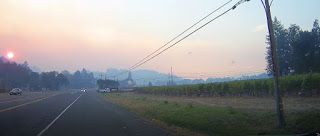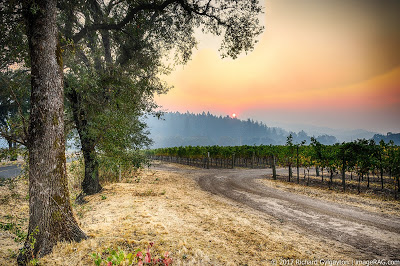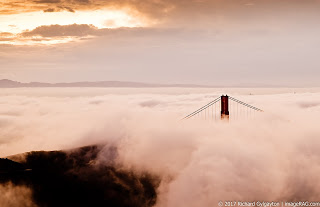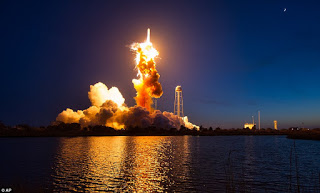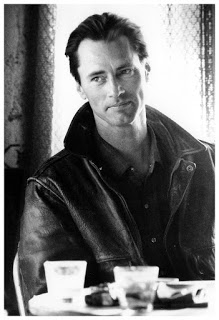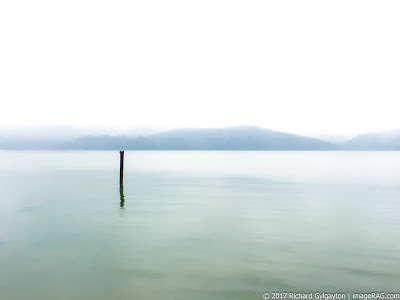 |
| The Carquinez Strait looking south from Benicia |
Ever since I was an undergraduate I have been influenced by
Jungian psychology. And of all the concepts that Jung described, the idea of synchronicity has always been the most resonant for me. The term is familiar to most people, most likely because of the hit song by
The Police. I’m not sure that the song really has much to do with the concept as defined by Jung, though the lines “many miles away something crawls from the slime / at the bottom of a dark Scottish lake” reverberates in a
Shadowy sort of way. We’ve all experienced those moments when multiple spontaneous events transpire that seem significant and yet have no causal connection. Those types of occurrences are filled with meaning, and they surprise us because they appear out of nowhere and rise above the routine affairs that occupy us every day. There’s a tinge of magic and mysticism to them, at least for those of us who are paying attention.
Recently as I have been gathering material for posts in this blog I’ve been digging back into my archives to discover previous writings that trigger memories. That is all part of what I am calling
The Tension of Memory. Recently I discovered a piece that I worked on in 1993. It was a spiritual autobiography and an attempt at a memoir. I had forgotten about it. Little nuggets of the past like that are always exciting to find, and this one contained a remembrance of the day I learned
Transcendental Meditation. (I have incorporated it into this post). I shared that encounter with my friend Jeff, back in my St. Mary’s College days, in 1974.
Then a week or so later as I was traveling to Mendocino for a three day trip of photography and
negative ion experience (more on that at another time), synchronicity suddenly materialized. My friend Jeff has lived his whole life in the amiable town of
Benicia. He makes his living as a realtor and has probably been a part of the selling and purchase of most of the homes in his hometown over the years. He’s a lifelong friend, and though we don\’t see one another as often as we should, our relationship is typical of old pals. It’s like reading a familiar book chapter by chapter, separated by reading sessions that might be a year or two apart. I’m lucky to have many friends like that.
 |
| Toll Plaza while talking with Jeff |
My route took me through Benicia. Interstate 680 crosses over the
Carquinez Strait at the
Benicia-Martinez Bridge. It’s a quick drive from my place and I always think about Jeff when I drive that road. Geographical elements seem to be a trigger for memories in addition to old pieces of writing. As I was driving to the toll plaza and got my FastTrak unit ready, the phone rang (which I answered hands free, of course). It was the default ring that I use for all incoming calls, the
Ennio Morricone theme from
The Good, the Bad, and the Ugly. I was just leaving behind a frustrating and unexpected traffic jam and was looking to get some miles under the tires.
It was Jeff. Calling out of the blue mysterioso spaces of synchronicity. The familiar voice said to me: “You’re on my mind. I thought I’d give you a call.”
“The reason you’re on my mind is because I am just about to drive across the Benicia Bridge.”
“Oh stop it! You’re kidding me. How cool. How cool.”
He went on to tell me that he follows this blog and that he was at some sort of “seminar about vibrations and quantum mechanics in the field so its sounds is if some resonation went across the universe there.” (It didn’t sound like a real estate seminar, and I’ll have to reach out to him to get the details.)
“There are many mysterious things that happen that skepticism has no explanation for,” I said. I suppose I’m a part time skeptic at moments like that. I hope I didn’t sound too pedantic.
We went on to talk about baseball and the San Francisco Giants, as Jeff and his wife had been down in Arizona for Spring Training, and then we wrapped up the call.
Afterwards I laughed for the sheer joy of the spontaneity of this encounter. There I was caught in an unexpected traffic jam that was holding me back from making rapid tracks up to a place that I had been looking forward to visiting for weeks, and just as the road cleared, Jeff called and everything became an enigmatic metaphor.
You cannot explain why synchronicity happens. There’s no answer for it in the scientific view, and it can hardly be described in words that specify the experience. One can only just revel in the marvelous quality of the non-causal connection that seems to have a root that cannot be pinned down. It’s as if poetry arrives unbidden for a few moments, spreads a bunch of magic, and then evaporates, leaving a perfume of familiarity that is based somewhere deep down within the psyche. And that place is not the bottom of a dark Scottish lake. It’s more like an ephemeral glimpse of paradise.
As I traveled up the coast afterwards this experience was on my mind, and memories started to flow like a stream running with cold spring rainwater. I recalled that many years ago Jeff had given me a copy of a book titled
The Lazy Man’s Guide to Enlightenment by Thaddeus Golas. I still have that book and pulled it out of my library when I got back from my trip. You can find a
PDF copy of the book here. I recommend perusing it. I haven’t read it in many years, but it is in my reading queue once more.
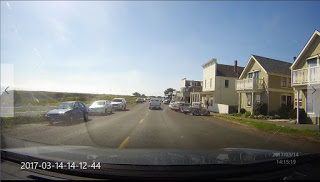 |
| Mendocino Arrival |
In Mendocino I was preoccupied with memories as well, not only memories of my wife (I was there to observe the third year anniversary of her sudden passing as well as to make photographs), but memories of times forty years ago when experiments with psychoactive chemistry, meditation and alternative ways of experiencing the universe were at the forefront of cultural experience. I had some meaningful conversations with a friend who lives in that little village about those times and how it seemed that changing the world radically was a distinct possibility. And Transcendental Meditation was part of all that wobbly world of metaphysical miasma.
That was a heady time. (That pun is intended by the way!) There were many alternative spiritual paths available and many of them were strongly present in the public eye. A lot of them were fringy or cultish, but it was a more innocent and less millennial atmosphere than the shallow nineties and the current insanity of America. TM teachers and lecturers were soft spoken and held regular introductory seminars on college campuses. There was no talk of God, divinity or spirituality. The active words were \”stress management\” and \”mental health.\” TM is easy, they emphasized, and will clear away your stress so that you can be happy and productive. The seventies were a less cynical time. These were honest people with a real methods that worked. The less curious type of people laughed at them, or accused them of preying on an unsuspecting public looking for pie in the sky. That’s understandable, but I think that attitude was and is the result of fear of the creature at the bottom of the lake.
 |
| Mendocino Morning |
I went to my first lecture in late spring of 1974, only to discover that I didn\’t have the $75.00 (an enormous sum of money for me at the time) for the initiation fee. I became very motivated for a summer job that year. (The price for that today is roughly 13 times that amount! Spiritual inflation?)
The only employment I could find that summer was a dismal low-paying, mind-grinding position selling subscriptions to the Los Angeles Times over the phone. I did this for six or eight weeks, earned enough for the fee and some extra money for the school year and quit, to the disgust of my father whose view was that I should spend every waking moment pushing potential subscribers on the phone in order to make as much money as possible. I hated that job! Of course I could not tell him what I was planning to do immediately upon returning to SMC. There was plenty of time for him to be irrational about that later.
Upon my return I discovered that several of my friends had been initiated during the summer and were already meditating. They were all exhilarated and excited about the experience. I reattended the lecture series and discovered that in order to begin the technique I had to give up drugs and alcohol for two weeks before the initiation. Yes, I was a lazy man in those days.
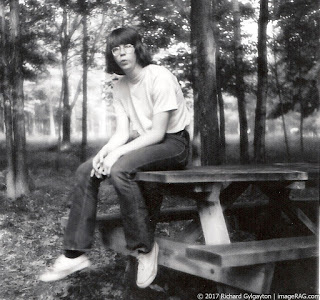 |
| The author in dopier and lazier days |
Looking back on it I realize how strong my psychological addiction to cannabis was. I was actually disappointed and unsure of my ability to give it up for a measly 14 days! It was so much a part of my life. It was all around me, each day, consistently. There was always a buddy smoking a joint in his or her room. A half dozen times a day the opportunity would arise: when I did a radio stint at
KSMC, or went for a walk or dropped by a friend’s room. It was a persuasive and consistent part of college life in California in the mid-seventies. (It probably still is, but the dope is more powerful.) The absence of alcohol would be no problem. I drank moderately and carefully. Marijuana was another matter. I did what I thought was my best and managed to stay sober for seven to ten days. It was tough to be strong about it, but somehow I managed.
Eventually the Saturday that we had scheduled for initiation rolled around and Jeff and I got ready to go. We were to bring with us a clean handkerchief and a few flowers, which we stole from the flower boxes in front of the dormitory. We stopped to purchase handkerchiefs at a drug store on the drive to the TM Center.
The center was a non-descript house in Walnut Creek close to where I actually live at this time. We were greeted at the door and asked to wait in the living room. I was a little nervous, the same way as when visiting the dentist, but it was balanced by a sense of accomplishment. I was doing this because I wanted to, and had saved up the money myself. Eventually I was guided to a back room that overlooked a colorful garden and met my teacher. I don\’t recall her name, but she was attractive, a white woman with long black hair. She wore western style clothes and was cheerful, but radiated a cautious and serious demeanor. If I had met her in the grocery store I would not have recognized her as a teacher of meditation. She could just as easily been a bank teller.
She explained what we would do. We would first offer the flowers and the clean cloth with a prayer of thanks to Guru Dev, Maharishi\’s teacher, who had recovered this long lost technique of meditation. Then she would give me my
mantra and I would meditate by myself for ten minutes. She would then check on me, and then I would meditate for 10 minutes more. Simple and easy.
She took my flowers and handkerchief and placed them on a table in front of a small and simply framed picture of Guru Dev. Then she began to speak in Sanskrit. I was touched by the sudden sacredness and ceremony of this moment. I had no thoughts, no expectations of my experiences to come during meditation. I was exhilarated and happy. Some new world was opening before me, a journey, and yet I was not thinking about it in that way. I just lived the moment.
When I meditated by myself in a small room the effect was immediate and profound. My breathing slowed, my heart rate dropped, my limbs and muscles relaxed like gelatin, and I dropped into my own thoughts like a scuba diver in the ocean for the first time, exhilarated by the freedom of movement in a new environment. I felt as if I was floating on the inside, and dreaming while I was awake. My teacher checked on me. All was well and I continued.
I remember having a big goofy smile on my face at the end of the second ten minutes. I felt like an idiot in front of my attractive teacher, but I supposed she knew that and was used to it. I met Jeff in the living room, he had been initiated concurrently, and we went back to the college where all the other meditators swapped stories with us about their own initiations.
 |
| The author as enlightened lazy college student |
I had passed through a metaphorical gate. Stepping through it was no different than taking a walk during an autumn afternoon. For the rest of that year, my last at SMC, we would meditate individually in the mornings and meet in groups in the evening. Meditating in a group seemed to enhance the effect. My roommate and I meditated each evening before dinner. It was a comradeship that contained a spiritual link, though we didn\’t think of it in that way. Stress management and relaxation were still they key words. I thought about it in a sacred manner, but did not speak of it, or proselytize, keeping Lao Tzu in mind.
Since then meditation has always been part of my life in one form or another. I no longer practice TM. I fell away from the movement as time passed. The “guru” element was not something with which I was comfortable, and when yogic flying got added to the mix, well, that was just too weird for me. As I mentioned I’m a part time skeptic. (Here are some links to the
pro and
con on that technique.) I have always been secular in my approach to metaphysics, simply because that seems practical. I suppose that’s why I incorporate so many Jungian concepts into my daily experience of life.
Thus my phone call with Jeff, while suffused with mystery and meaningful coincidence, was simply a phone call. And my trip to Mendocino, which was also a metaphorical passage through a gate, was simply a trip. The big mysteries of life are really not transcendental. They don\’t come from some “other place.” They come from the universe inside us, and are part of us at all times. It’s just that most of the time we are too preoccupied with thoughts and desires to pay any attention to the mystery that is with us at every moment of every day and night. We are all lazy, whether we are looking for Enlightenment or not.
When the voices rise from the bottom of the lake, all we have to do is be grateful and listen to them.
Thanks for the phone call, Jeff. I’ll be in touch soon.
 |
| The Glory of Mendocino |

